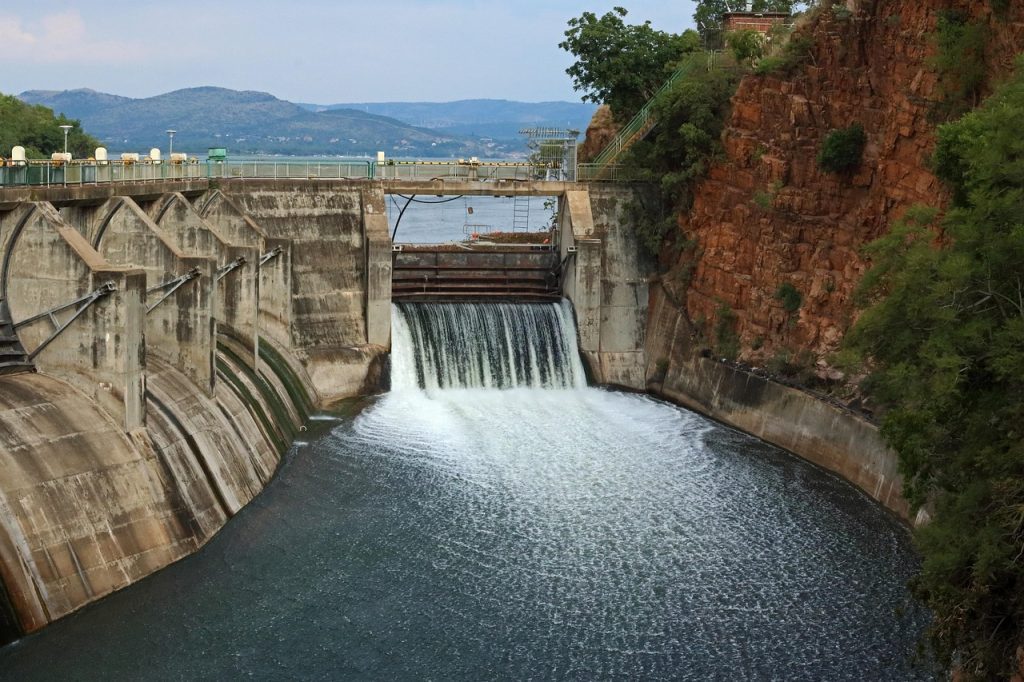Reservoirs are everywhere. They supply water for cities, generate electricity, and support agriculture.
But behind their benefits, reservoirs dramatically alter the environment, often in ways we don’t fully appreciate until it’s too late.
If you’ve ever wondered how these massive artificial lakes affect nature, you’re in the right place.
How Reservoirs Change Natural Water Flow
Rivers aren’t meant to be stopped. They flow, shift, and nourish entire ecosystems.
But when we build dams, we disrupt that balance, thus:
1. Disrupted Flow Regimes:
Natural rivers have seasonal highs and lows – floods in spring, lower levels in summer. Reservoirs flatten this rhythm, releasing water based on human needs rather than nature’s cycles.
Downstream, wetlands dry up, fish lose spawning cues, and plants that rely on seasonal floods die off.
2. Sediment Trapping:
Rivers carry sand, silt, and nutrients downstream. Dams act like giant filters, trapping sediment.
Over time, this starves deltas (like the Nile or Mississippi) of vital land-building material, leading to erosion and sinking coastlines.
3. Groundwater Depletion:
When rivers slow, they recharge underground aquifers less effectively.
This can dry up wells and reduce water availability for surrounding ecosystems.
4. Domino Effect on Downstream Life:
Look at a river as a living, connected system. Block one part, and everything downstream suffers.
Fish can’t migrate, wetlands shrink, and species that depend on natural flooding (like certain birds and plants) struggle to survive.
How Reservoirs Cause Ecosystem Degradation and Biodiversity Loss
To create a reservoir, we drown forests, grasslands, wetlands, and sometimes vast areas.
This leads to:
a) Loss of Terrestrial Ecosystems:
The Balbina Dam in Brazil flooded over 2,300 square kilometers of rainforest.
In the process, it wiped out habitats for countless species.
b) Aquatic Life Disruption:
Fish like salmon rely on free-flowing rivers to spawn. Dams block their path, leading to population crashes.
In the Columbia River (USA), salmon numbers have plummeted due to dams.
c) Invasive Species Takeover:
Still water in reservoirs is a breeding ground for invasive plants and animals, which will, in turn, outcompete native species.
Reservoirs and Greenhouse Gas Emissions
You might think hydropower is clean energy, but reservoirs have a dirty secret – they emit greenhouse gases.
When vegetation floods, it rots underwater without oxygen, producing methane – a gas 25 times more potent than CO₂.
Studies show some reservoirs emit as much carbon as fossil fuel plants, especially in tropical regions.
Brazil’s Tucuruí Dam, for example, releases significant methane.
Is Hydropower Really “Green”?
While reservoirs don’t burn fossil fuels, their emissions challenge the idea that they’re entirely eco-friendly.
The IPCC acknowledges this, and pushes for better assessments of reservoir impacts.
Reservoirs and Water Quality Deterioration
Reservoirs don’t flow like rivers, leading to:
- Thermal Stratification: Layers of water at different temperatures form, harming cold-water species.
- Eutrophication and Algal Blooms: Fertilizer runoff feeds algae which creates toxic dead zones where fish can’t survive.
- Mercury Contamination: Flooded organic matter converts mercury into methylmercury, a neurotoxin that builds up in fish and eventually, in us.
The Human Cost of Reservoirs
- Displaced Communities: Over 80 million people have been displaced by dams worldwide.
- Lost Fisheries and Farmland: Downstream, less sediment means less fertile soil. Many fisheries collapse after dam construction.
- Cultural Destruction: Indigenous lands, like those affected by Canada’s Site C Dam, are often flooded without consent.
| 📜 Case Study: Three Gorges Dam (China)
The world’s largest dam displaced 1.4 million people, increased landslide risks, and altered ecosystems. Was the trade-off worth it? |
Can We Build Better Reservoirs?
Yes, we can. Or at least we can significantly reduce it’s impact on the environment and humans through:
- Dam Removal: Some rivers, like the Elwha in the U.S., have rebounded after dams were torn down.
- Environmental Flow Management: Mimicking natural water releases helps downstream ecosystems.
- Fish Ladders and Bypasses: These structures help migratory fish, though they’re not always effective.
Are There Cleaner Options Than Hydropower?
Yes, there are. An even better way to reduce the effects reservoirs have on life, in general, is to find another way to fulfill the need for them through other ways.
Solar and wind energy are now often cheaper and less ecologically damaging than large dams.
Bottom Line
Reservoirs solve immediate human needs but at a steep environmental price.
The question isn’t just whether we need them, but whether we can design them better or replace them with smarter solutions.
